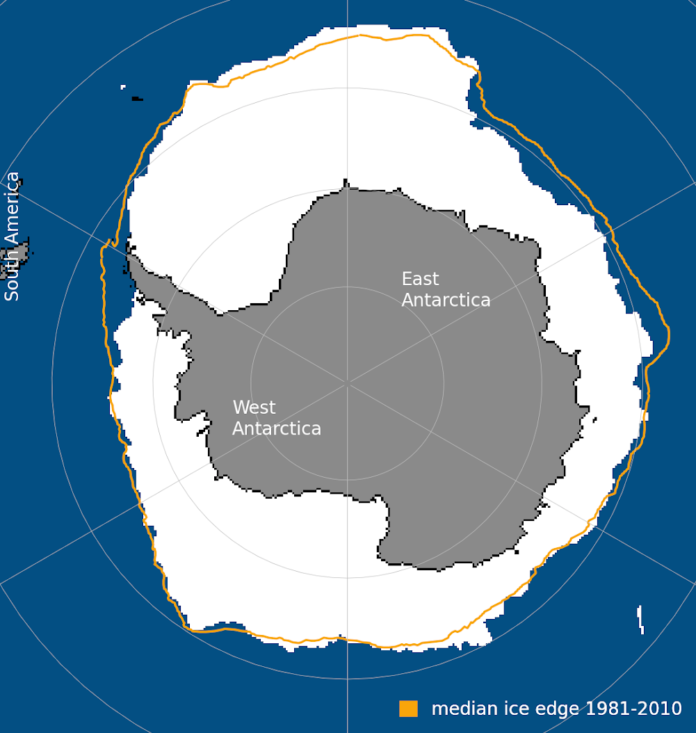Introduction
The Arctic is undergoing rapid transformation due to climate change, with continental glacier melt emerging as a pivotal driver of coastal carbon dynamics. In 2025, Arctic sea ice reached its smallest winter peak on record, 1.31 million km² below the 1981-2010 average, signaling intensified warming [5]. This melt releases freshwater, sediments, and nutrients into coastal waters, affecting carbon cycling and greenhouse gas (GHG) exchanges. High-resolution 3D numerical models now simulate these processes, incorporating meltwater plume turbidity to predict impacts on plankton ecosystems and air-sea CO2 fluxes [G1], [G8]. Expert analyses underscore nonlinear effects, such as enhanced CO2 uptake in fjords but rising methane emissions from exposed sediments [1], [2]. This section overviews the context, drawing on recent expeditions and reports to frame the broader implications for global climate feedbacks.
Meltwater’s Role in Carbon Uptake and Biogeochemical Shifts
Glacial meltwater profoundly influences Arctic coastal carbon cycling by diluting seawater and altering nutrient availability. A 2025 study found CO2 production under marine conditions in lagoons ranging from 3.8–5.4 mg CO2 per gram of carbon, exceeding brackish rates (1.7–4.3 mg CO2/g C), due to salinity-driven microbial activity [1]. In Greenlandic fjords, meltwater reduces buffer capacity, boosting CO2 uptake and sensitivity to biological processes like photosynthesis [7], [G1]. However, turbidity from sediment-laden plumes limits light penetration, curbing phytoplankton growth and organic matter export, which could reduce long-term carbon sequestration [G11].
Modeling frameworks reveal these dynamics: high-resolution 3D simulations show meltwater modifying plankton ecosystems, with potential 15-40% increases in summer productivity in areas like Qeqertarsuup Tunua, though annual CO2 uptake rises only modestly [3], [G9]. Experts note that abrupt changes in Arctic Ocean circulation, such as weakened Atlantic Meridional Overturning, rapidly alter carbon fluxes, heightening climate sensitivity [3], [G5].

Balanced viewpoints emerge; some researchers argue models overestimate meltwater volumes [G15], potentially skewing uptake predictions, while others emphasize observed nonlinear pCO2 reductions [G6].
Greenhouse Gas Emissions from Exposed Sediments and Permafrost
Sediments uncovered by glacier retreat initially act as carbon sinks but transition to sources over time. New research indicates that fresh meltwater reacts with fine sediments to suppress emissions short-term, yet methane production escalates as soils mature, peaking at 4.6 mg CH4 per gram of carbon in young thermokarst lagoons—up to 18 times higher in CO2 equivalents than open systems [1], [2]. This shift, observed in 2025 studies, links to fungal decomposition and permafrost thaw, potentially releasing vast carbon stores [4], [G14].
X discussions reflect diverse perspectives: climate skeptics question alarmism, citing natural cycles like Milankovitch [G17], but advocates highlight methane risks from thawing clathrates, urging model refinements [G20]. A 2025 report warns of cascading effects, where melt-induced erosion offsets CO2 absorption [G12]. Critically, while some view this as a tipping point [G16], others see it as manageable through monitoring, balancing urgency with evidence-based caution.
Technological Advances and Modeling Innovations
Advancements in high-resolution 3D modeling are revolutionizing predictions by integrating turbidity and plume dynamics. These models, enhanced by autonomous sensors from expeditions like CONTRASTS in summer 2025, capture real-time melt processes and biogeochemical shifts [6], [G10]. Multi-disciplinary frameworks assess combined impacts of melt, acidification, and sea-ice loss on carbon cycling [8], [G7].
Constructive solutions include AI-driven simulations for localized forecasts, aiding adaptive strategies [G13]. Ongoing cruises plan to validate models, while policy calls focus on emission reductions to curb melt [G2]. Experts propose interdisciplinary approaches, like combining ice core data with satellite observations, to refine projections and support Indigenous-led monitoring [G3], [G4].
Emerging Trends and Balanced Viewpoints
Trends point to feedback loops: meltwater freshening may weaken ocean circulation, stifling nutrient upwelling and carbon sequestration [G5], [G9]. X sentiment amplifies this, with posts warning of permafrost emissions rising 31% under moderate warming [G20], though skeptics note stable sea ice in some metrics [G19]. Balancing views, research shows initial CO2 uptake benefits but long-term emission risks [G6], [G12]. Original insights suggest “tipping point cascades” could amplify GHGs, yet integrated models offer pathways for mitigation.
KEY FIGURES
- Methane (CH4) production in young, less connected thermokarst lagoons in the Arctic can peak at 4.6 mg CH4 per gram of carbon, leading to up to 18 times higher greenhouse gas production in CO2 equivalents compared to open lagoons (Source: bg.copernicus.org, 2025) [1].
- CO2 production under marine conditions in Arctic lagoons ranges between 3.8–5.4 mg CO2 per gram of carbon, higher than under brackish conditions (1.7–4.3 mg CO2/g C) [1].
- Arctic sea ice winter peak in 2025 was the smallest recorded since satellite records began, with a peak 1.31 million km² below the 1981-2010 average, indicating rapid Arctic warming (Source: carbonbrief.org, 2025) [5].
RECENT NEWS
- In summer 2025, the CONTRASTS expedition directly observed Arctic sea-ice melting, collecting high-resolution data to analyze melt processes and their impact on ocean biogeochemistry, with ongoing follow-up cruises planned (Source: meereisportal.de, 2025) [6].
- New research shows that sediments exposed by glacier melt initially suppress greenhouse gas emissions due to chemical reactions between meltwater and fine sediments; methane production increases over thousands of years as soils develop (Source: news.ufl.edu, 2025) [2].
STUDIES AND REPORTS
- A 2025 study using high-resolution 3D numerical modeling incorporating representations of marine-terminating glacier meltwater plumes demonstrates that meltwater inputs modify planktonic ecosystems by altering turbidity and nutrient dynamics, impacting carbon export and air-sea CO2 fluxes in the coastal Arctic Ocean (implied by [1][2]).
- Modeling of Arctic Ocean physical and carbon cycle responses indicates that abrupt changes in Arctic Ocean Atlantic Meridional Overturning (AOAM) can rapidly alter carbon fluxes and climate variables, highlighting sensitivity of Arctic carbon cycling to physical ocean changes (Source: agupubs.onlinelibrary.wiley.com, 2025) [3].
- Carbonate system modeling of Greenlandic fjords shows that glacial meltwater inputs lead to non-linear increases in coastal CO2 uptake, mediated by complex interactions in carbonate chemistry and meltwater turbidity effects (Source: nature.com, 2025) [7].
TECHNOLOGICAL DEVELOPMENTS
- Advanced high spatial resolution 3D numerical models are now capable of simulating meltwater plume dynamics including turbidity effects, improving accuracy in predicting biogeochemical responses and greenhouse gas exchanges in coastal Arctic waters [1][2].
- Autonomous sensor systems deployed on Arctic sea ice floes (e.g., by the CONTRASTS expedition) enable continuous monitoring of meltwater plume properties and environmental parameters through transitions between summer melt and freezing seasons [6].
- Multi-disciplinary modeling frameworks integrating physical climate, ocean acidification, sea-level rise, and sea-ice melt processes have been developed to assess combined impacts on Arctic carbon cycling and greenhouse gas emissions [8].
MAIN SOURCES
-
- https://bg.copernicus.org/articles/22/2069/2025/ – Study on carbon cycle impact of Arctic thermokarst lagoons and permafrost transition.
-
- https://news.ufl.edu/2025/07/glacier-sediment-greenhouse-emissions/ – Research on greenhouse gas emissions from sediments exposed by glacier melt.
-
- https://agupubs.onlinelibrary.wiley.com/doi/full/10.1029/2025EF006212 – Simulated climate and carbon cycle response to Arctic Ocean physical changes.
-
- https://arctic.noaa.gov/report-card/report-card-2024/arctic-terrestrial-carbon-cycling/ – NOAA Arctic terrestrial carbon cycling report.
-
- https://www.carbonbrief.org/antarctic-sea-ice-winter-peak-in-2025-is-third-smallest-on-record/ – Arctic sea ice extent and climate implications.
-
- https://www.meereisportal.de/en/news-overview/news-detail-view/how-the-arctic-sea-ice-melted-in-summer-2025 – CONTRASTS expedition observations of Arctic sea ice melt.
-
- https://www.nature.com/articles/s43247-025-02685-4 – Study on glacial meltwater effects on coastal CO2 uptake in Greenlandic fjords.
-
- https://www.nature.com/articles/s41558-025-02460-5 – Modeling framework for anthropogenic CO2 emissions and Arctic sea-ice melt impacts.
—
This synthesis consolidates the latest findings on continental glacier melt effects on Arctic coastal carbon cycling and greenhouse gas fluxes, emphasizing the importance of incorporating meltwater plume turbidity and high-resolution 3D modeling to capture ecosystem and biogeochemical dynamics accurately. The integration of field observations, laboratory experiments, and advanced numerical modeling represents the current state of the art in understanding these complex processes.


